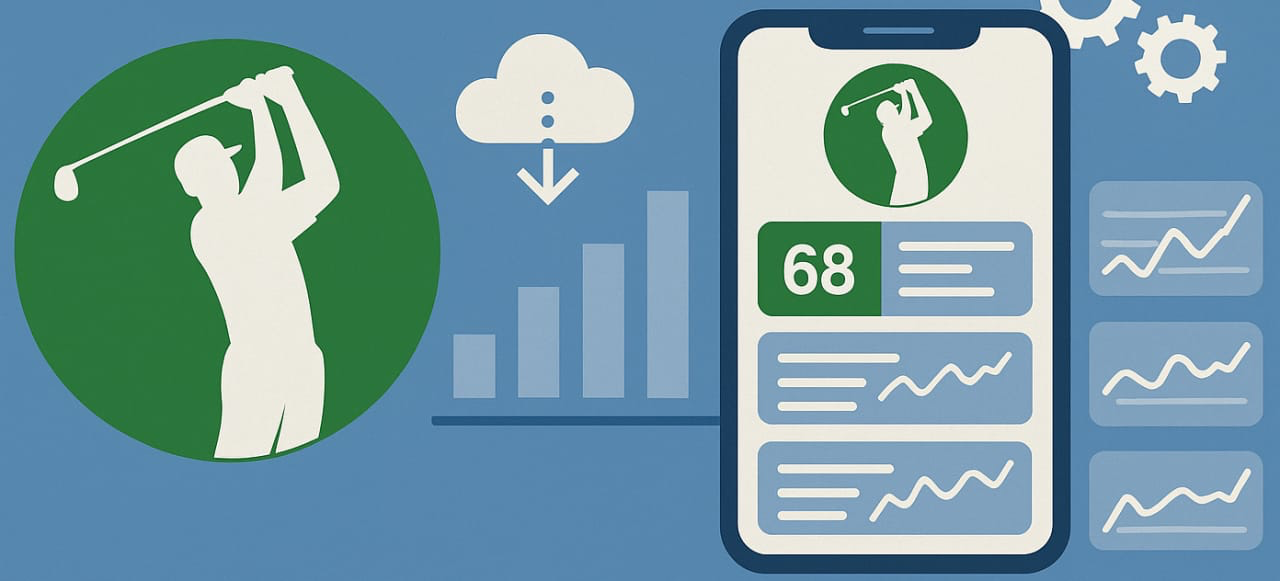
Fantasy sports apps have gained excellent popularity in recent times, with people getting the chance to win exciting cash prizes.
Moreover, the users are getting the chance to see real-time data of the live match through and it's the heartbeat of the user engagement.
For example, users get live updates as their favorite golfer sinks a birdie or misses a crucial putt, all within your app. These are the micro-moments that drive excitement, spark competition, and keep users coming back.
Want to know how the real-time data is integrated in a fantasy golf sports app?
This blog will give you the answer, so keep reading it till the end.
A fantasy golf sports app is a digital platform where users participate in a fantasy golf game, which is centered around real-life professional golf tournaments.
The users of the fantasy golf sports app can select real-life professional players, create their teams, users compete against each other and earn points based on the team’s performance.
The goal of each team or user must be to make a high score based on the performance of the real-life golfer using a winning strategy and win exciting cash prizes.
The fantasy golf sports app is capable of tracking the performance of the golfers during the actual tournament in real time. After tracking the scores, it's automatically updated in the app, which helps users to see where their team is standing.
Many fantasy golf sports apps are there that come with additional features like leaderboards, player statistics, predictive analytics, and customizable leagues.
These fantasy sports apps also come with the opportunity for the users to play with their friends, family, and known people.
To create an app similar to a fantasy golf sports app, you must know the tech stack used in fantasy sports app development. So, we have listed the tech stack used in different steps of fantasy app development to meet both functional and performance needs.
To provide an optimum user experience, the fantasy apps need to be sleek, responsive, and intuitive.
The technology to be considered :
The data processing of the fantasy app is taken care of by the backend development. It handles the user authentication, team creation, match scoring, and leaderboard calculations.
The technology to be considered :
It is crucial to choose the right database for storing players, stats & managing teams.
Fantasy sports apps require a robust database that can handle user data and authentication, player stats, team rosters, game rules, league settings, scoring, and leaderboards.
The technology to be considered :
To get real-time data, API integration with your fantasy sports app is crucial.
The API you needed is listed below :
For the scalability of the fantasy sports apps, cloud services are crucial. Your app must be scalable, secure, and always online, especially during tournaments.
The technologies to be considered :
For golf app development, you need to follow a few strategic steps, which require careful planning and execution.
We have guided you on explaining the steps that you need to follow while you develop an app like fantasy golf sports app.
The steps are explained below :
Start with market research before you write a single line of code. It is one of the crucial steps, because you need to understand your target audience and also analyse the competitors.
When you know what your audience’s choice or preference is, you can prioritize them while app development. Also, knowing the competitors will help you to fill the gap where they are lacking.
Define the features that you want in your fantasy golf sports app that help you build the base of your app.
Finalising the important functionalities of the fantasy sports app will help you to prioritize them while you develop the app.
The functionalities like player selection, scoring systems, and social sharing should be in the list. Decide on the format of gameplay; it works in different styles like classic fantasy league, daily fantasy, etc.
Design your fantasy sports app, which is the frontend of the app, and is important to attract users.
Create a prototype of the app using wireframes that is focused on the user's experience (UX) of app design. Then, make sure your app has an attractive user interface that attracts more users.
To create the prototype of the golf sports fantasy app, it will be a good idea to use tools like Figma, Adobe XD, and Sketch.
Now, after the design, proceed to start the development process of the fantasy sports app. You have to develop both the frontend and backend of the app.
It will be best to follow the agile method of the fantasy app development as this will allow flexibility to complete the development steps.
The part of development includes setting up user authentication, team management logic, integrating real-time scoring APIs, and others.
After completing the whole design development process, it's time to test the app, without which the app cannot be launched.
Testing the app will help businesses identify the bugs and other issues that may disrupt the working of app.
Test the functionality, load, security, and API accuracy of the app. When you find that the newly developed app is ready to use, launch it on the app download platforms for the audience to use the app.
With a well-functioning fantasy sports app, you not only allow users to earn scores but it offer the best app experience. Your audience must get live leaderboard updates, performance analytics, and predictive insights.
So, you know how you can build an interactive and high-stakes fantasy sports app. From tech stack to steps of development, you know everything.
Now is the time you make the best out of your business by developing an app that hooks everyone around.